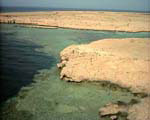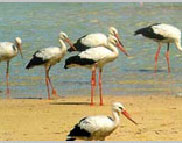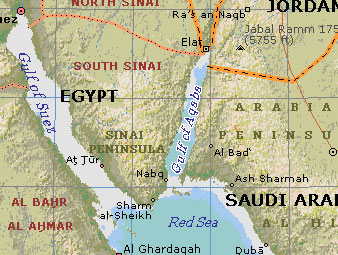Ras Mohamed is a Red Sea Marine Reserve and Egypt’s first National Park. It was established in 1983 with an area of 97 km sq. The Park has expanded to 480 km sq, and includes marine and land areas at the lower point of the Sinai Peninsula, the islands of Tiran and Sanafir, and all the shorelines to the highest annual tide between Sharm al Sheikh Harbor and the southern boundary of the Nabq Managed Resource Protected Area.
Ras Mohammed area is recognized as having one of the world’s most diverse marine life: there are more than 200 species of corals in the waters off Ras Mohamed, 125 of which are soft corals, about 1000 species of fish, 40 species of star fish, 25 species of sea urchins, more than a 100 species of mollusk and 150 species of crustaceans. Mangrove stands, salt marshes, inter-tidal flats add to the diversity. The water is clean, clear and warm. At a depth of 20m is the Eel Garden, named for its population of garden eels.
The desert areas in the National Park which appear lifeless in contrast to the colorful underwater life are home to the Nubian Ibex, desert fox, small mammals, reptiles and insects.
Ras Mohammed is a stopover for migratory birds such as heron and osprey, and home to gulls and terns. The majority of the world populations of white stork pass through this area on their migration to East Africa. The islands of Tiran and Sanafir are important breeding grounds for both the White-eyed Gull and Osprey; Tiran has one of the largest recorded Osprey populations in the Red Sea. The endangered Green Turtle and Hawksbill Turtle are regular visitors.
The terrestrial areas of the park are home to the desert fox, reptiles and small mammals, and the Nubian Ibex in the mountain areas.





